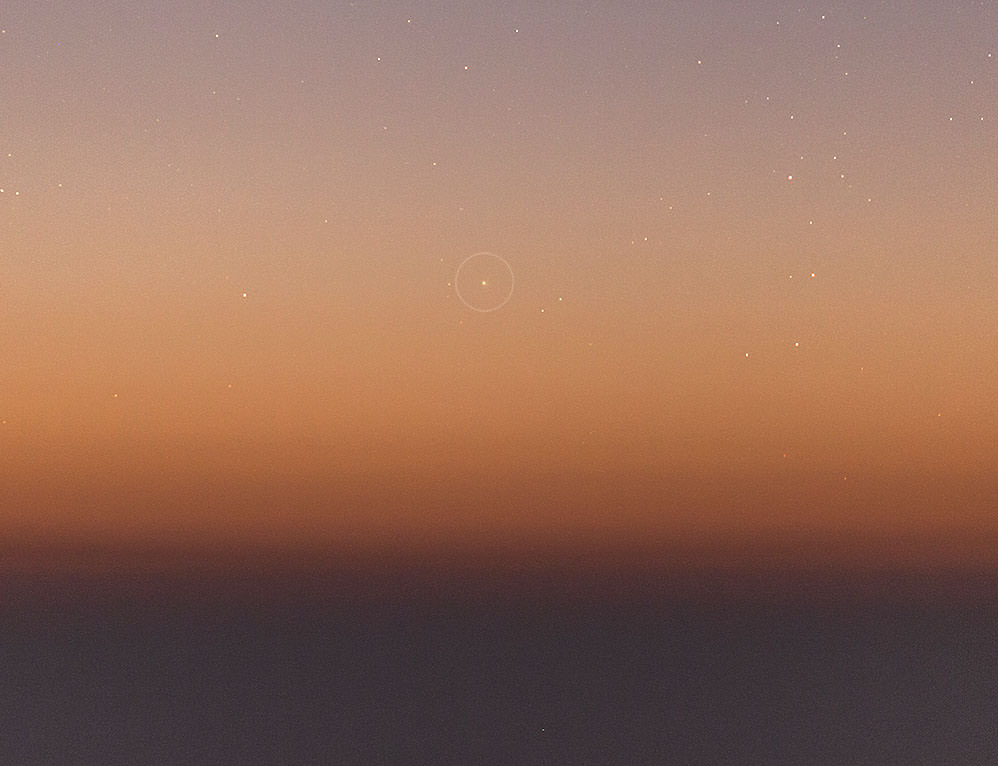If you love watching comets and live north of the equator, you’ve been holding your breath a l-o-n-g time for C/2013 US10 Catalina to make its northern debut. I’m thrilled to report the wait is over. The comet just passed perihelion on Nov. 15th and has begun its climb into morning twilight.
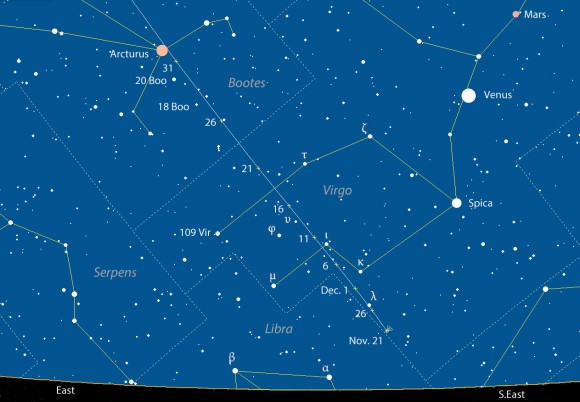
The first post-perihelion photo, taken on Nov. 19th by astrophotographer Ajay Talwar from Devasthal Observatory high in the Indian Himalayas, show it as a starry dot with a hint of a tail only 1° above the eastern horizon at mid-twilight. Additional photos made on the following mornings show the comet inching up from the eastern horizon into better view. Estimates of its current brightness range from magnitude +6.8-7.0.
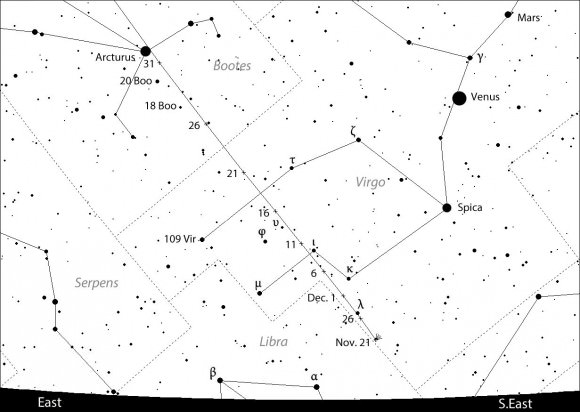
Talwar, who teaches astrophotography classes and is a regular contributor to The World at Night (TWAN), drove 9 hours from his home to the Himalaya mountains, then climbed up the observatory dome to get enough horizon to photograph the comet. The window of opportunity was very narrow; Talwar had only 10 minutes to bag his images before the comet was overwhelmed by zodiacal light and twilight glow. When asked if it was visible in binoculars, he thought it would be but had too little time to check despite bringing a pair along.
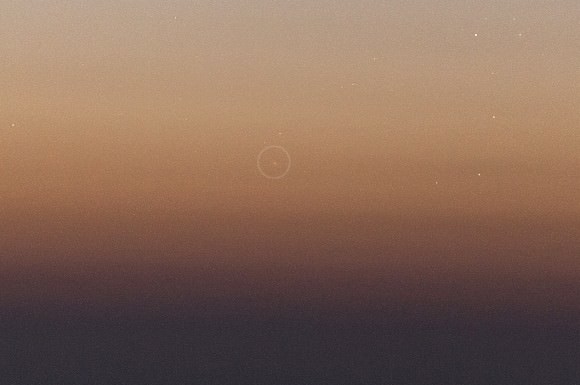
A difficult object at the moment, once it frees itself from the horizon haze in about a week, Catalina should be easily visible in ordinary binoculars. Watch for it to gradually brighten through the end of the year, peaking around magnitude +5.5 — just barely naked eye — in late December and early January, when it will be well-placed high in the northeastern sky near the star Arcturus (see map). Matter of fact, on the first morning of the new year, it creeps only 1/2° southwest of the star for a splendid conjunction.
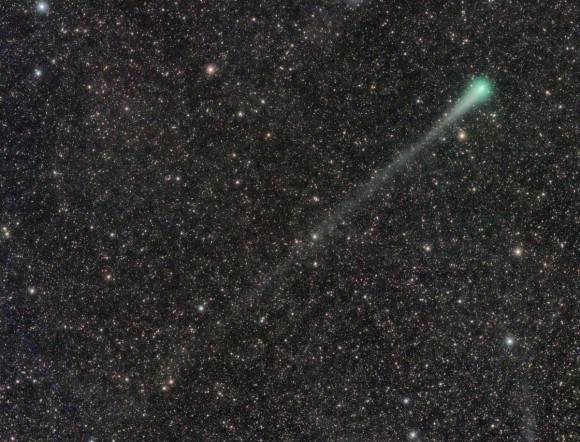
Halloween 2013 was an auspicious one. That’s when Comet C/2013 US10 was first picked up by the Catalina Sky Survey. The “US10” part comes from initial observations that suggested it was an asteroid. Additional photos and observations instead revealed a fuzzy comet on a steeply tilted orbit headed for the inner Solar System after a long sojourn in the Oort Cloud.
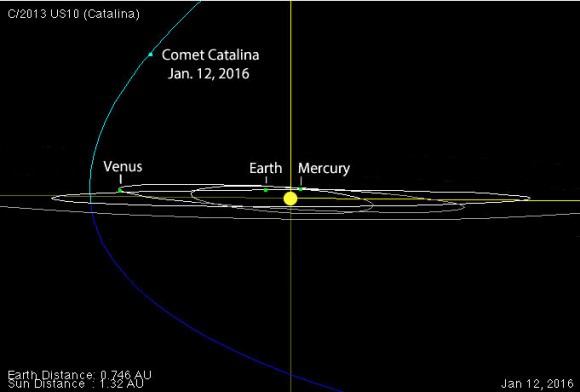
Its sunward journey has been nothing short of legendary, requiring several million years of inbound travel from the frigid fringe to the relative warmth of the inner Solar System. Catalina will pass closest to Earth on Jan. 12th at 66.9 million miles (107.7 million km) before buzzing off into interstellar space. Yes, interstellar. Perturbations by the planets have converted its orbit into a one-way ticket outta here.
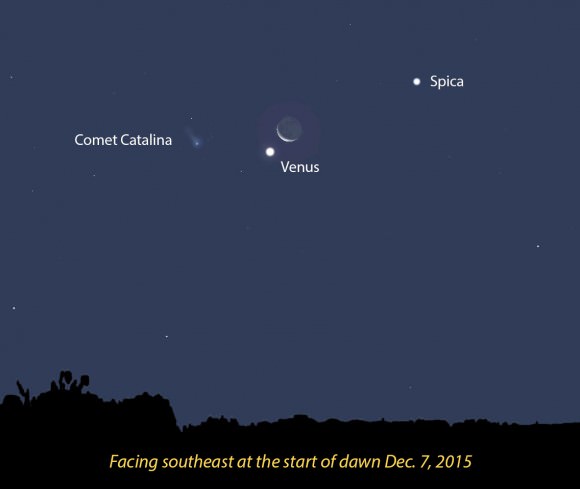
When using the maps above, keep in mind they show the comet’s changing position, but the constellations and planets can only be shown for the one date, Nov. 21st. Like the comet, they’ll also be slowly sliding upward in the coming days and mornings due to Earth’s revolution around the Sun; stars that are near the horizon on Nov. 21 at 5:30 or 6 a.m. will be considerably higher up in a darker sky by the same time in December. Adding the shift of the stars to that of the comet, Catalina gains about 1° of altitude per day in the coming two weeks.
When you go out to find Catalina in binoculars, note its location on the map and then use the stars as steppingstones, starting with a bright obvious one like Spica and “stepping” from there to the next until you arrive at the one closest to the comet.
I’m so looking forward to finding Catalina. Nothing like a potentially naked eye comet to warm up those cold December mornings. Mark your calendar for the morning of Dec. 7th, when this rare visitor will join Venus and the crescent Moon in the east at the start of morning twilight. See you in spirit at dawn!

